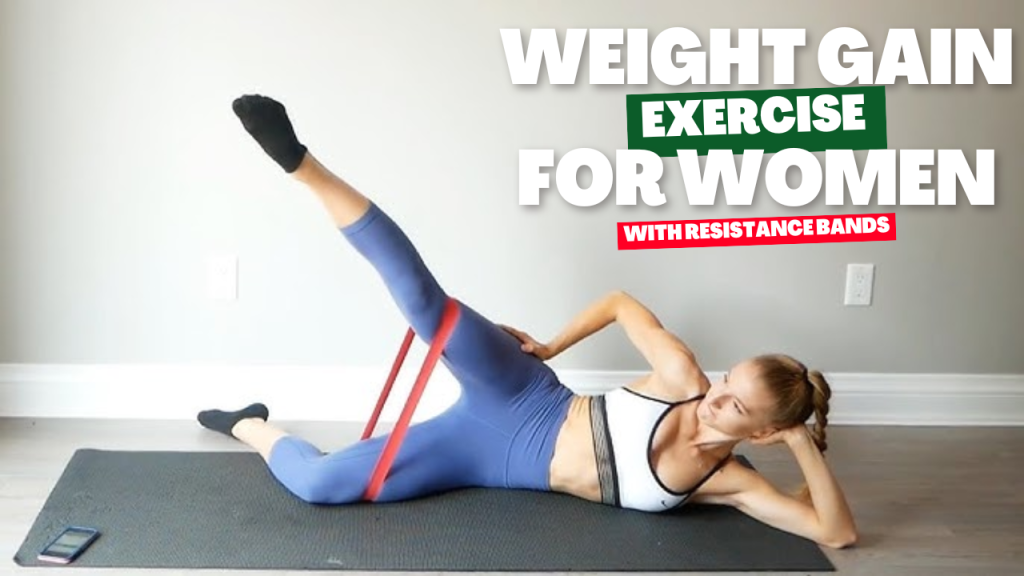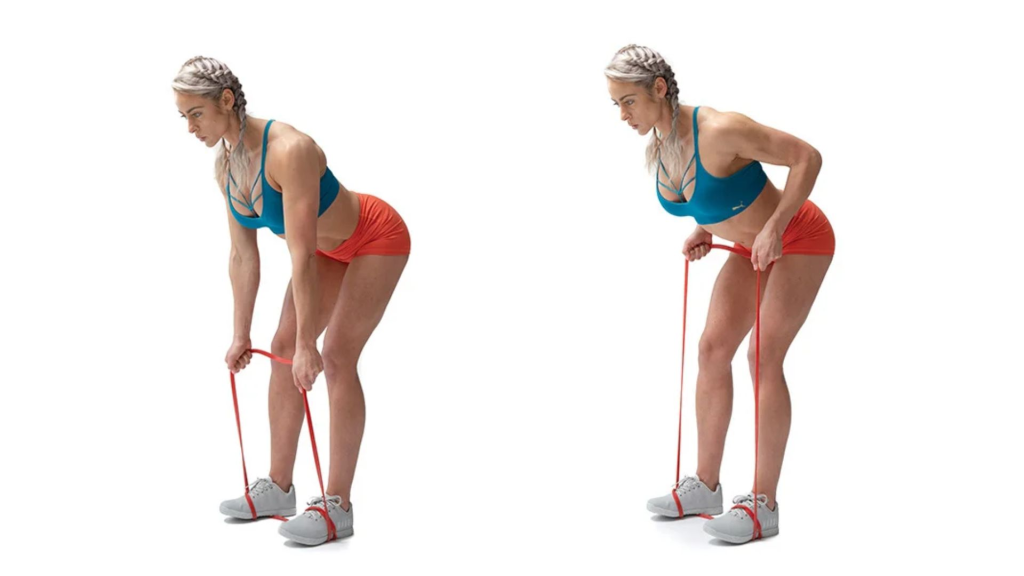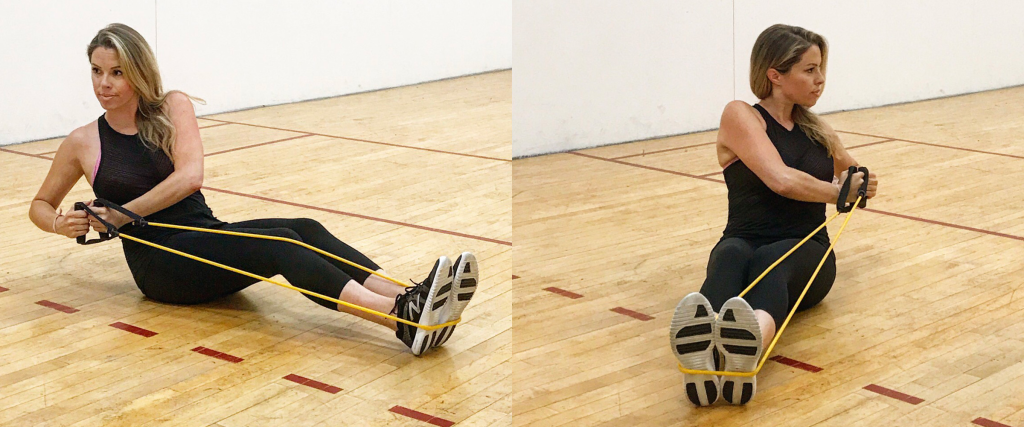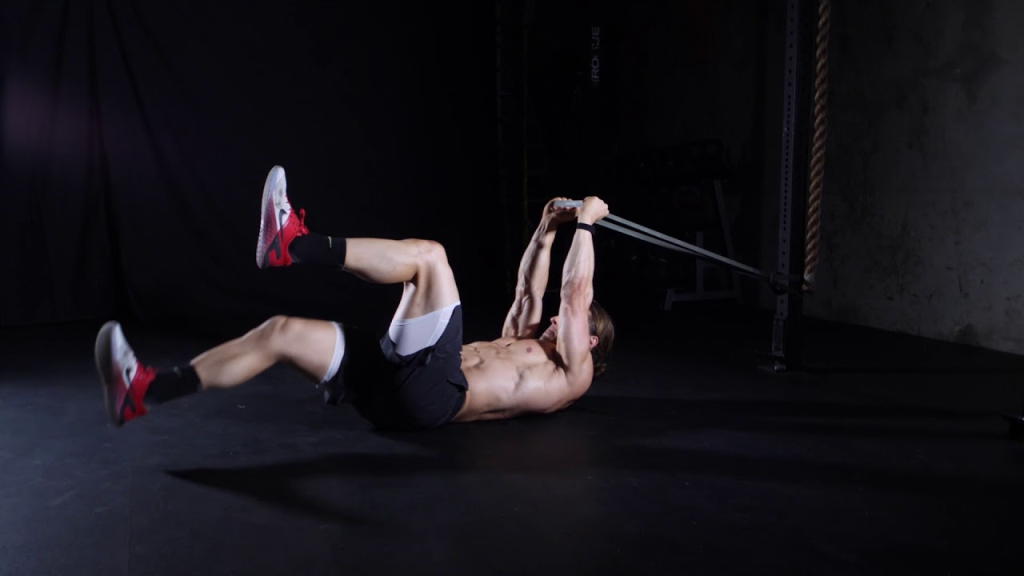Hooked on feeling stronger and looking more toned—but without stepping into a crowded gym? If you’re a woman looking to gain a healthy weight and build lean muscle from the comfort of your home, resistance bands might just become your new favorite tool. Lightweight, versatile, and surprisingly powerful, resistance bands offer a low-impact yet highly effective way to build curves, boost strength, and promote weight gain the smart way.
Let’s dive deep into how resistance bands can support your weight gain goals, the best exercises to include in your routine, and expert tips to maximize results.

Why Weight Gain Exercises Are Important for Women
While society often focuses on weight loss, there’s a growing awareness around women who struggle with being underweight or maintaining muscle mass. Gaining weight doesn’t mean piling on fat—it’s about building strength, enhancing curves, and improving overall vitality.
Key Benefits of Muscle-Focused Weight Gain:
- Improved hormonal balance
- Boosted metabolism
- Better bone density
- Stronger joints and posture
- Increased energy and stamina
If done right, resistance training becomes your best friend—not only for gaining weight but also for reshaping your body with lean, functional muscle.
Why Resistance Bands for Women?
Resistance bands are often underestimated, but they offer a safe, scalable, and effective way to increase tension and grow muscles—especially for beginners or women training at home.
Advantages of Resistance Band Training:
- Cost-effective and space-saving
- Joint-friendly and low-impact
- Provides progressive overload without heavy weights
- Suitable for targeted training (glutes, thighs, arms, etc.)
- Easy to modify for all fitness levels
And yes—resistance bands absolutely can stimulate muscle growth and weight gain when used properly.
Best Resistance Band Exercises for Women to Gain Weight at Home
Let’s break it down by muscle group for a complete full-body routine.
1. Glutes & Legs – Sculpted Curves & Strength
Strong glutes and legs are key to healthy weight gain and aesthetics.
Banded Glute Bridges

- How to do it: Place a band above your knees, lie on your back, and push through your heels to lift your hips.
- Targets: Glutes, hamstrings
- Tip: Add a 3-second hold at the top to intensify the burn.
Banded Squats

- How to do it: With a band around your thighs, squat deep while pushing your knees out.
- Targets: Quads, glutes, hamstrings
- Tip: Focus on slow controlled reps for maximum muscle activation.
Standing Kickbacks

- How to do it: Anchor a band at your feet, and kick one leg back while squeezing your glute.
- Targets: Gluteus maximus
- Tip: Maintain a slight bend in your standing leg for stability.
2. Upper Body – Build Feminine Strength
Weight gain includes upper body development—think toned arms, defined shoulders, and improved posture.
Banded Bent-Over Rows

- How to do it: Stand on the band, bend slightly, and pull the handles toward your waist.
- Targets: Back, biceps
- Tip: Squeeze shoulder blades together at the top.
Banded Shoulder Press

- How to do it: With the band under your feet, press overhead while keeping your core tight.
- Targets: Shoulders, triceps
- Tip: Keep your wrists straight and move slowly to avoid injury.
Bicep Curls

- How to do it: Step on the band and curl your hands up with palms facing forward.
- Targets: Biceps
- Tip: Keep elbows tucked to avoid momentum.
3. Core – For a Stable and Strong Foundation
A solid core supports every movement and contributes to a balanced physique.
Banded Russian Twists

- How to do it: Sit on the floor, lean back slightly, and twist side to side with a band stretched between both hands.
- Targets: Obliques, abs
- Tip: Keep movements controlled and breathe out during each twist.
Banded Dead Bugs

- How to do it: Lie on your back, hold the band in both hands, and press one leg down at a time while keeping your core engaged.
- Targets: Lower abs
- Tip: Keep your lower back pressed into the floor to prevent strain.
How to Structure Your Workout Plan
To gain weight with resistance bands, consistency and progression are key. Here’s a simple weekly structure:
| Day | Workout Focus |
|---|---|
| Monday | Lower Body (Glutes & Legs) |
| Tuesday | Upper Body |
| Wednesday | Rest or Light Activity |
| Thursday | Lower Body |
| Friday | Core + Upper Body |
| Saturday | Active Recovery (Yoga/Stretch) |
| Sunday | Rest |
- Reps & Sets: 3–4 sets of 10–15 reps per exercise
- Progression Tip: Use thicker bands or increase time under tension as you grow stronger.
Nutrition Tip: Don’t Outwork Your Plate
Exercise stimulates muscle growth, but calories and protein fuel it.
- Eat calorie-dense meals every 3–4 hours
- Include lean proteins (chicken, eggs, tofu)
- Add healthy fats (nuts, avocado, olive oil)
- Don’t forget complex carbs (sweet potatoes, oats, whole grains)
- Stay hydrated!
Consider tracking your intake using apps like MyFitnessPal to ensure you’re in a slight calorie surplus.
Tips to Maximize Muscle Gain with Bands
- Focus on form first – Proper technique prevents injury and improves results.
- Keep tension constant – Don’t let the band go slack.
- Increase resistance weekly – Use thicker bands or double them up.
- Track your workouts – Log reps, sets, and resistance level.
- Stay consistent – Progress doesn’t happen overnight.
Final Thoughts
You don’t need expensive gym equipment to gain weight and build strength—you just need a smart plan, resistance bands, and dedication. Whether you’re a beginner or looking to spice up your home workouts, this resistance band routine can help you build curves, confidence, and muscle—all while staying in the comfort of your home.
Remember: Gaining weight the healthy way isn’t just about the number on the scale—it’s about building a stronger, more vibrant version of you.
Frequently Asked Questions (FAQs)
Can resistance bands really help with weight gain for women?
Yes, resistance bands can support healthy weight gain by helping you build lean muscle mass. While bands don’t add weight like dumbbells, they provide progressive resistance, which is key for muscle growth when combined with a calorie-surplus diet.
How often should I do resistance band workouts to gain weight?
For best results, aim for 3–5 resistance band workouts per week, focusing on major muscle groups. Be sure to incorporate rest days to allow muscle recovery and growth.
Do I need different types of bands for different exercises?
It’s ideal to have a set of resistance bands with varying tension levels (light, medium, heavy). Lower resistance works well for upper body and core, while heavier bands are better for glutes and legs.
How long before I start seeing results?
Visible changes vary per person, but with consistent training and proper nutrition, many women notice improvements in muscle tone and weight gain within 4–6 weeks.
What should I eat to support weight gain and muscle growth?
You need a calorie surplus—eat more than you burn. Prioritize protein-rich meals (like eggs, chicken, tofu), healthy fats, and complex carbs. Protein shakes and smoothies are also great additions.
Can I build curves with resistance bands alone?
Yes! Exercises like glute bridges, squats, and kickbacks with resistance bands can help develop the glutes and legs, enhancing your curves naturally.
Are resistance band workouts safe for beginners?
Absolutely. Resistance bands are beginner-friendly, low-impact, and reduce the risk of injury compared to heavy weights. Start with light resistance and focus on proper form.
Do I need to warm up before resistance band workouts?
Yes, a 5–10 minute warm-up (like dynamic stretches or light cardio) helps increase blood flow and prepares your muscles for exercise, reducing the risk of injury.
Should I train during my period or take a break?
Training during your period is completely safe and can even relieve cramps. Listen to your body—modify intensity or take rest days as needed.





